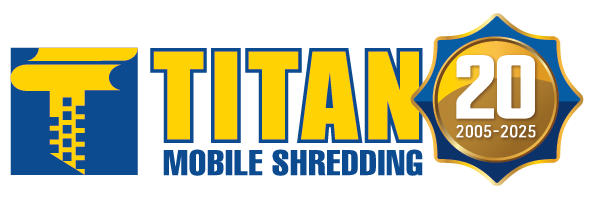The need for robust data security measures has never been more critical as our world becomes increasingly digitized. One such measure is data shredding—a technique that has evolved from its humble beginnings in paper destruction to become a vital aspect of modern security practices. In this article, we will look at the journey of data shredding from paper to pixels and explore its impact on today’s security landscape.
The Origins of Data Shredding: Paper Destruction
The concept of shredding can be traced back to the invention of the paper shredder in 1909 by Adolf Ehinger, a German engineer. He developed a hand-cranked paper shredding machine that cut paper into thin strips, making it challenging to piece together the original document. Initially, paper shredders were primarily used by government agencies and large corporations to dispose of sensitive information securely.
Throughout the years, paper shredding technology improved, with cross-cut shredders becoming popular in the mid-20th century. These machines cut documents into strips and sliced them horizontally, creating small confetti-like pieces. This advancement made it even more challenging to reconstruct shredded documents, providing a higher level of security.
Transitioning to the Digital Age: Hard Drive Destruction
With the advent of the digital age, businesses and individuals began to store vast amounts of sensitive data on electronic devices, such as hard drives and flash drives. As a result, the need for secure data destruction methods became more pressing. In response, companies like TITAN Mobile Shredding, specializing in data destruction, started offering services to destroy hard drives, rendering the stored information irretrievable physically.
Hard drive destruction techniques include crushing, degaussing, and shredding. Crushing involves applying extreme force to the hard drive, causing it to shatter into small pieces. Degaussing uses powerful magnets to scramble the data stored on the hard drive, making it unreadable. Finally, shredding involves cutting the hard drive into tiny pieces, much like paper shredding.
The Rise of Digital Data Shredding: Software Solutions
While physical destruction methods are effective for disposing of hard drives, they are not practical for devices still in use. In response to this challenge, software-based data destruction solutions emerged, allowing users to securely delete files on their devices without physically destroying them. Digital data shredding software, also known as file erasure or data wiping software, works by overwriting the data with random characters multiple times. This process ensures that the original information is impossible to recover, even with advanced forensic tools. These software solutions are essential for businesses and individuals who must remove sensitive data from devices before repurposing or selling them.
The Impact of Data Shredding on Modern Security Practices
The evolution of data destruction has had a significant impact on modern security practices. Here are a few ways in which data shredding has influenced how we protect our sensitive information:
Compliance with Data Protection Regulations
Data protection regulations, such as the General Data Protection Regulation (GDPR) in Europe, the Health Insurance Portability and Accountability Act (HIPAA) in the United States, and the California Consumer Privacy Act (CCPA), require businesses to implement robust data security measures, including secure data disposal. Data shredding plays a critical role in helping businesses comply with these regulations, protecting their customers’ privacy and reputations.
Environmental Considerations
As data shredding techniques have evolved, so too have the environmental considerations surrounding their use. Modern shredding techniques focus on reducing waste and ensuring that materials are recycled or disposed of responsibly. For example, many data and document destruction companies now offer e-waste recycling services to help businesses minimize their environmental footprint.
Enhanced Security Measures
The advancements in data shredding technology have led to more secure data destruction methods, making it increasingly difficult for cybercriminals to access sensitive information. As a result, businesses and individuals can have greater confidence in the security of their data, knowing that state-of-the-art shredding techniques protect it.
From its origins in paper destruction to its current role in digital data security, data shredding has come a long way. The evolution of data shredding has had a significant impact on modern security practices, helping businesses and individuals protect their sensitive information in an increasingly digitized world. By staying informed about the latest advancements in data destruction technology and implementing secure data disposal practices, we can all play a part in safeguarding our privacy and contributing to a more secure digital landscape.
Choose TITAN Mobile Shredding for Secure Data Destruction
When it comes to secure data destruction, trust the experts at TITAN Mobile Shredding. Our state-of-the-art shredding services ensure that your sensitive information is disposed of safely and responsibly. With a commitment to customer satisfaction, compliance with data protection regulations, and environmentally-friendly practices, TITAN Mobile Shredding is the smart choice for your shredding needs.
Contact us today to learn more about our services and how we can help keep your data secure.




